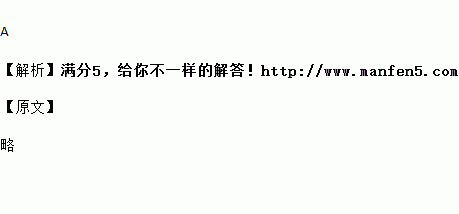题目内容
Who wants to enter a competition?
A.Tony. B.Betty. C.Daming.
SEALIFE Sydney | |
No trip to Sydney is complete without visiting SEA LIFE Sydney Aquarium. Specialties: ★More than 12,000 sea animals. ★Over 100 metres of glass viewing tunnels. ★Within inches of huge sharks, rays, dugongs(儒艮)and turtles swimming above your head. | |
Dugong Island Dugong Island hosts some dugongs and a variety of tropical fish. It is said that when early delirious sailors from Europe finally arrived in Australia’s waters, they mistook the animals for mermaids(美人鱼)after too long out on the ocean. | Shark Valley Face your fears on the Shark Walk and walk over some of the world’s biggest aquarium sharks, such as Grey Nurse Sharks. Although their sharp teeth make them look terrible, they offer no threat to humans. |
Discovery Rock-pool Not all the animals are behind glass at SEA LIFE Sydney Aquarium! Come and meet one of our experts and make an amazing discovery at our rock-pool. You’ll be able to see and touch sea stars, shark eggs, shells and more! And yes, hand cleaner is provided. | |
Opening time this summer Regular Trading Hours: 9:30 am - 7:00 pm (last entry 6:00 pm) Christmas Day Hours: 9:30 am - 3 pm (last entry 2 pm) New Year’s Eve Hours: 9:30 am - 3 pm (last entry 2 pm) | Price (Children under 4years old are free!) TICKET Save up to 20% - Online Only! GENERAL ADMISSION $46 at the door $36.80 ADULT FROM (CHILD $26.40) |
1.How many specialties of SEA LIFE Sydney Aquarium are mentioned in the material?
A.12,000 B.100 C.46 D.3
2.The underlined word “delirious” probably means “too ________ to recognize what one sees.”
A.sad B.excited C.nervous D.confused
3.If Mr. Clark takes his wife and 10-year-old daughter to SEA LIFE Sydney Aquarium and he buys the tickets online, he should pay ________ for the entrance fee.
A.$ 63.2 B.$ 73.6 C.$ 100 D.$ 128.8
4.Which statement is TRUE according to the passage?
A.There are only dugongs in Dugong Island.
B.The opening hours on Christmas Day lasts 5 hours and a half.
C.Grey Nurse Sharks offer great threat to human beings.
D.All the animals are behind glass at SEA LIFE Sydney Aquarium.
5.What can we infer(推测)from the passage?
A.The population of Grey Nurse Sharks is smaller than before.
B.SEALIFE Sydney Aquarium is the best tourist attraction in Australia.
C.It is not convenient for kids to clean their hands after touching starfish.
D.SEA LIFE Sydney Aquarium is an educational place for people to learn about sea life.
6.Which of the following is NOT the writing purpose of the text?
A.To ask people to take action to protect sea animals
B.To attract the tourists to SEA LIFE Sydney Aquarium.
C.To provide useful information for tourists before their visit.
D.To introduce some exciting places in SEA LIFE Sydney Aquarium.


 B.
B. C.
C.